Always a Time of Need: Spotlighting Five Organizations Making a Difference in San Diego and Beyond
Learn more about the meaningful work of Meals on Wheels San Diego County, Cancer Revengers, Helen Woodward Animal Center, Laughing Pony Rescue, and Monarch School
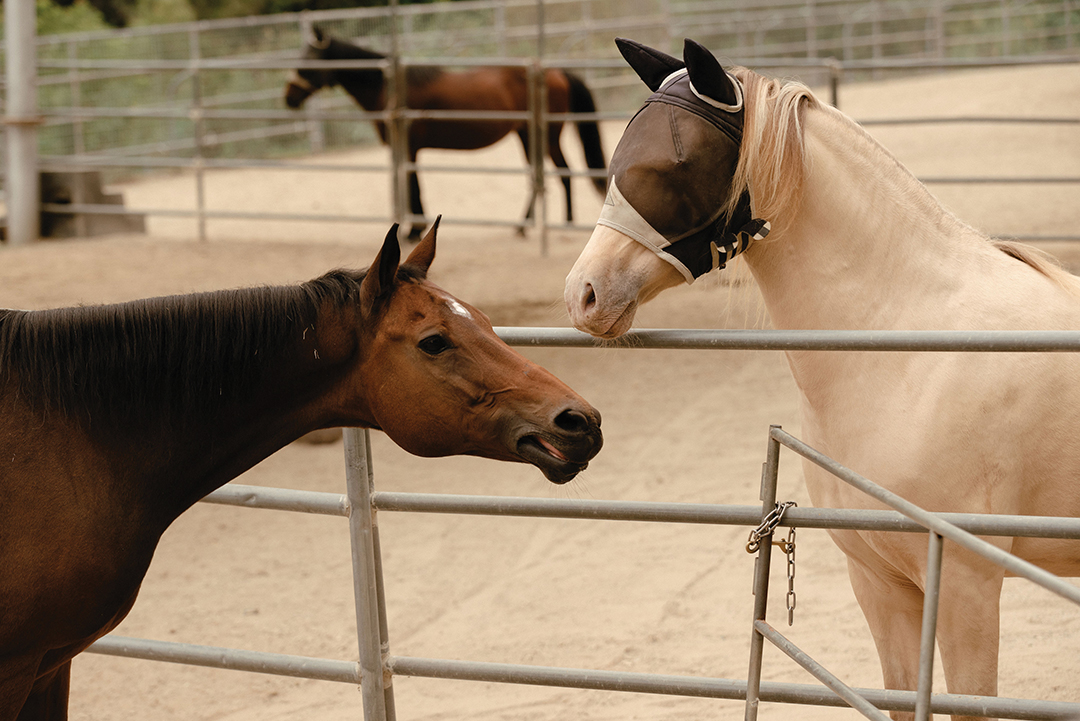
Despite efforts, expertise, and the best of intentions, there is almost inevitably a gap between the vast spectrum of need that exists everywhere and the people, programs, and organizations that strive to address it. Fortunately, San Diego’s robust nonprofit world is historically well-supported in its efforts to positively impact issues affecting people, animals, the environment, the arts, and more within a generous and actively charitable local community. And though acts of charity are often defined as those three magic “T”s — Time, Talent, and Treasure — the reality is that it’s the treasure that is often the most deeply needed.
The list of all the things we wish we could fix and those we hope to help is long, and no single contribution is likely to be a magic remedy. But here’s the beauty of it: Philanthropy doesn’t depend solely on one person, but rather the concept that through shared compassion and generosity, we can make a difference. In their mission to do just that, a handful of local organizations have captured our interest and our hearts in this season of giving.
Feeding Independence
Providing healthy, home-delivered meals to San Diego seniors and veterans is no small undertaking, but it’s one that Meals on Wheels San Diego County tackles daily with the help of thousands of volunteers. The numbers, though, tell the whole story. “Right now, we’re doing about 630,000 meals a year to homebound seniors,” says President and CEO Brent Wakefield, adding, “It’s a pretty extraordinary event for an organization that has 98 employees.” How such a feat is even remotely possible is due to the astounding number of volunteers — 3,100 in total — who donate their time to each deliver meals to between six and ten homebound seniors age 60 and up and disabled veterans of any age for every day of the year.
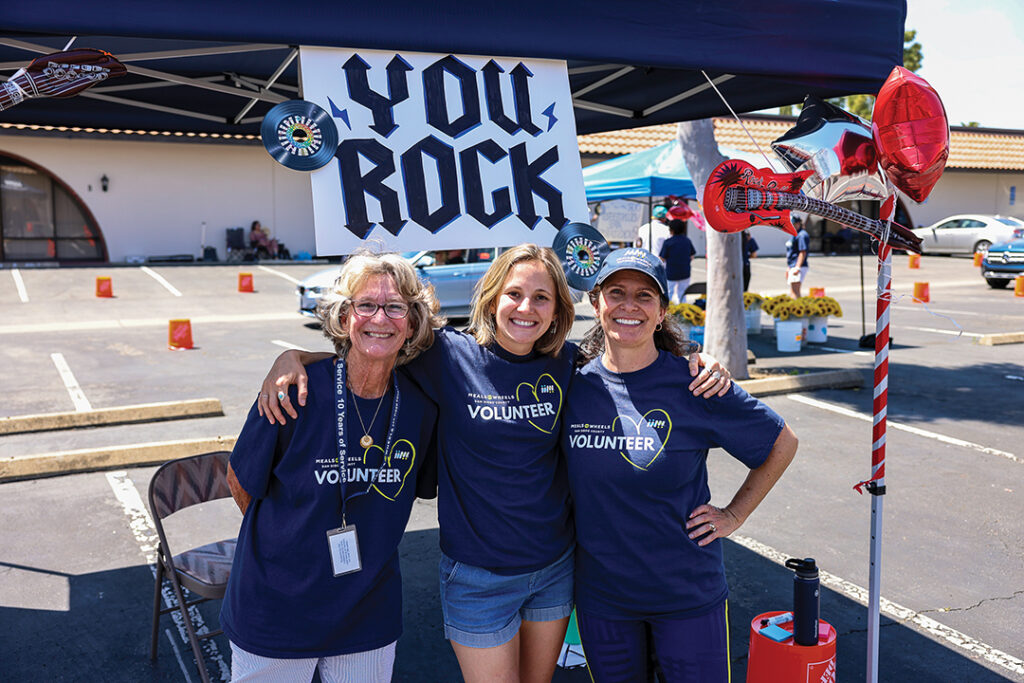
It’s not just about getting the meals delivered, however. “About 50 percent of our clients live alone,” says Wakefield. “So really, those are the two big issues we deal with: nutrition and isolation.” When the Meals on Wheels volunteer is the only person a meal recipient sees in a day, as is often the case, it not only becomes what Wakefield refers to as “senior isolation interruption,” but it ultimately doubles as a critical — and sometimes life-saving — wellness check. In fact, the organization uses an app in which volunteers can note observations from their visits to ensure the health and safety of those they serve and activate any additional services or emergency contacts whenever necessary for a more modern, wraparound approach.
The food itself remains at the heart of what Meals on Wheels does, and what’s on offer might not be what you’d expect. The organization works with a registered dietician to create not just one menu but several in order to address the needs of a diverse population nutritionally, physically, and even culturally. All follow strict nutritional guidelines, but different options include vegetarian, Latin, gluten-friendly, and even easy-to-chew. “It’s more of a modern experience than they’re used to,” says Wakefield. “We’re stepping it up and going from what Meals on Wheels used to be associated with to something that is inspiring.” It’s a refreshing approach to the service, essentially behaving more like a bespoke meal delivery service rather than a charitable organization, and it’s intentional. “How we present our story and how we talk about our clients, I think, is a really important piece. You have to give folks dignity and hope from the get-go. Otherwise, I think you’re doing a disservice,” Wakefield explains. “It’s an empowering position that we’re trying to put them in.”
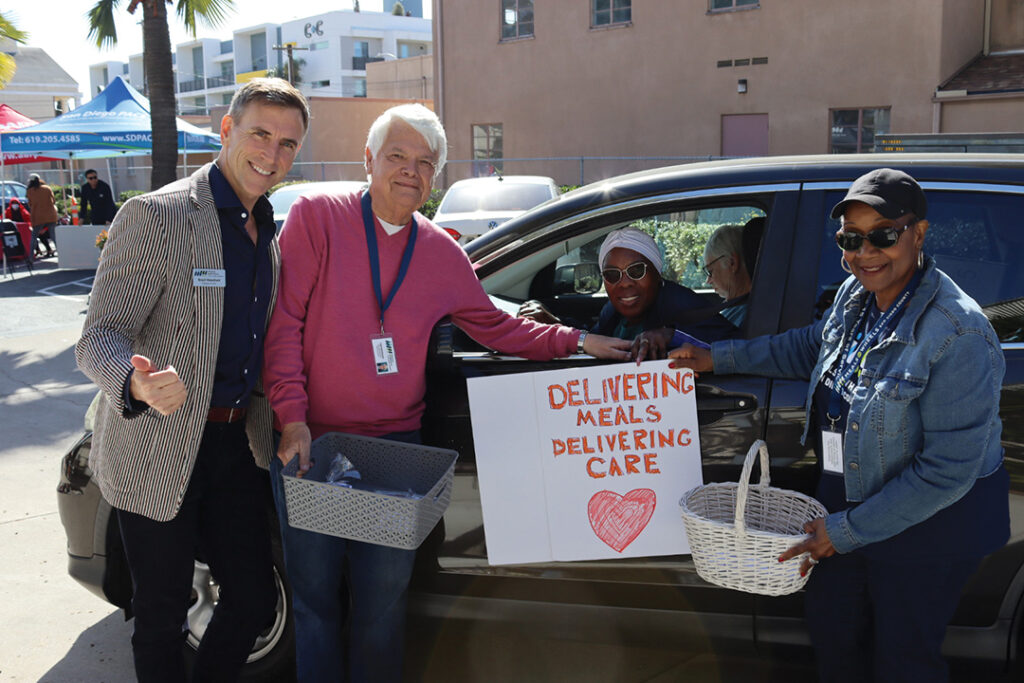
Part of that evolving story is the development of a new, 23,000-square-foot facility to act as both headquarters and what Wakefield calls a “senior innovation hub” that will include meeting rooms and collaborative spaces to share with other organizations they partner with, as well as a better base to service the roughly 150 daily volunteers who pick up meals to be delivered. Slated to open next spring, the offices are a key element in Wakefield’s mission to modernize the organization to serve more San Diego seniors in a meaningful, respectful, and efficient way.
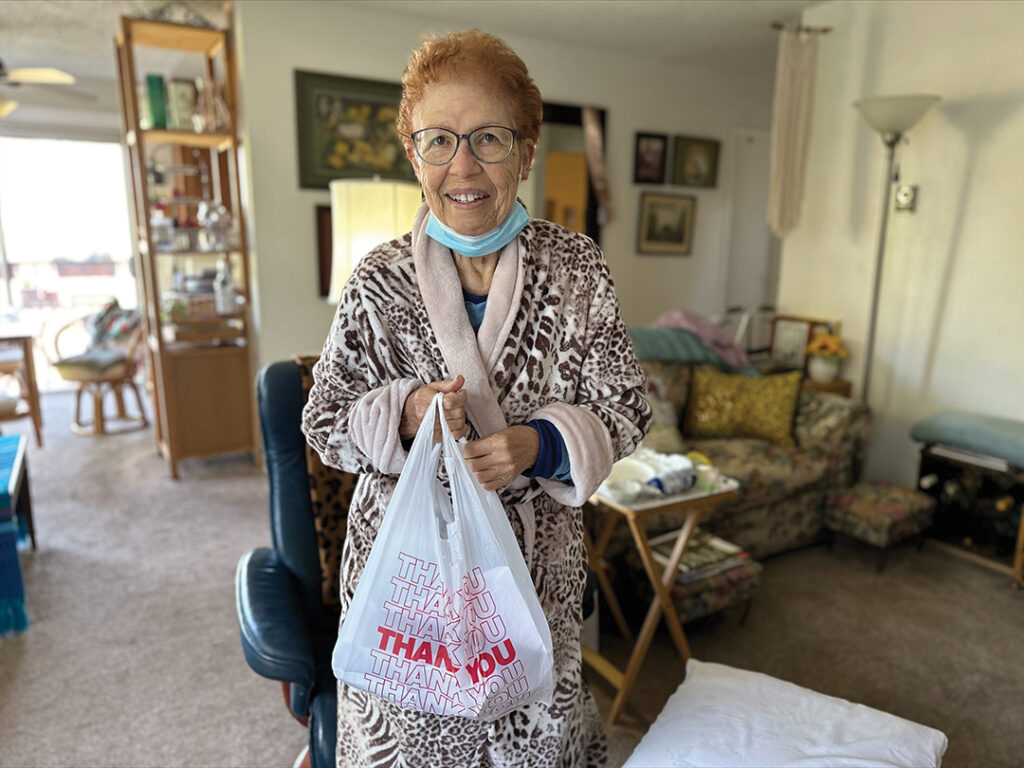
“It’s all kind of a new energy, and a new vision around aging seniors who want to stay independent in their homes as long as possible, and we can help them achieve that,” he says, though he also notes that research indicates the need is far greater than organizations can collectively measure. “There’s a lot of work to be done. I pat everybody on the back — everybody’s doing a great job. Now we all need to be three times bigger, honestly.” meals-on-wheels.org
A Father and a Fighter
Becoming president of an organization created to make impactful, direct contributions toward frontline efforts to cure pediatric brain cancer and other childhood cancers was not the original game plan for Shawn Mahoney. But, when his daughter, Layla, was diagnosed in 2021 with ependymoma, an incurable form of brain cancer, Mahoney jumped into the role not just for her, but for all the kids with cancer for whom he doesn’t think treatments and cures are coming quickly enough.
After what Mahoney felt were missteps early on in Layla’s treatment plan, he took matters into his own hands, researching experts and reaching out to doctors countrywide to find better treatments and learn what work is being done, and what the people doing the work need to support their research and trials in addition to seeking alternative answers and solutions for Layla. A serendipitous meeting with Dr. Mariella Filbin, a pediatric neuro-oncologist at Dana-Farber/Boston Children’s Cancer and Blood Disorders Center, who recognized Mahoney’s passion and direct approach to getting things done, led to an invitation for Mahoney to become part of a working group of like-minded oncologists, surgeons, researchers, and scientists connecting to make advancements in treating childhood brain cancers. “I said to them, ‘Look, if I’m going to join, I will under one condition. I need to name you and brand you what you really are: superheroes,’” he says. The working group became Cancer Revengers.
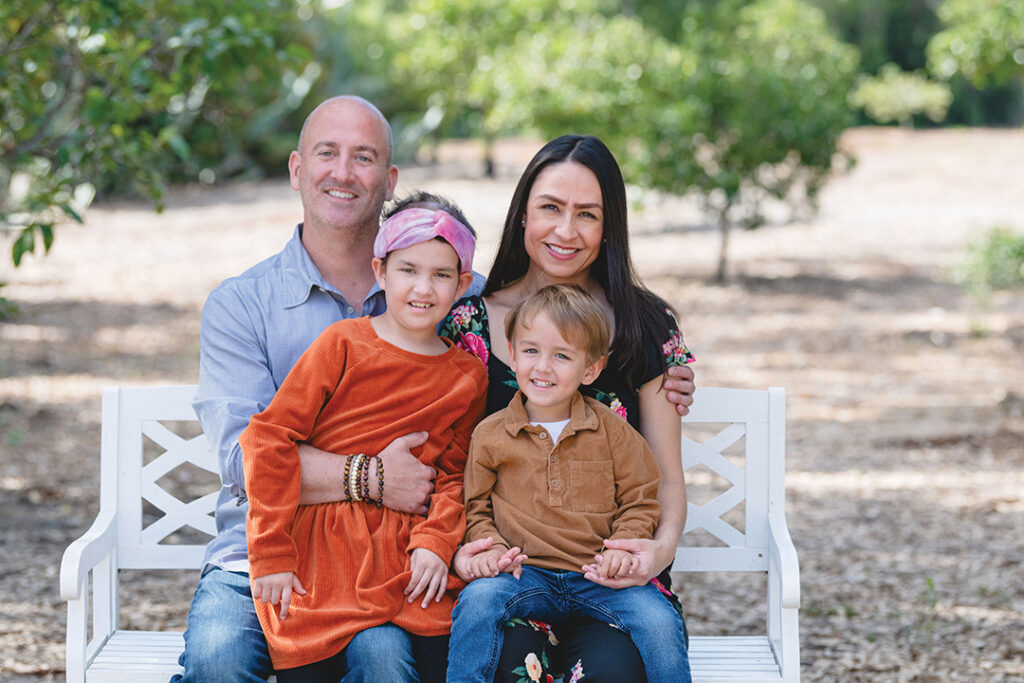
Disgusted to learn that just $4 of every $100 donated to cancer research is allocated to childhood cancers, Mahoney has made it his mission to advance support of research and therapies with promising potential to be real cures, a departure from the traditional methodologies that follow protocols prioritizing safety testing before any effectiveness can even be determined which, as Mahoney says, wastes valuable time. In addition to their own work, Cancer Revengers, which is not a nonprofit, partners with the nonprofit Pacific Pediatric Neuro-Oncology Consortium (PNOC) Foundation, which works to provide access to treatment strategies for kids with brain tumors. Mahoney knows that some donors are more comfortable making contributions to a nonprofit charitable organization, but he adds that as a non-nonprofit, Mahoney has flexibility to sidestep bureaucratic barriers and allocate donations directly where they can be most impactful, whether it’s funding a research assistant for a study or subsidizing travel costs for a family whose child needs life-saving treatment.
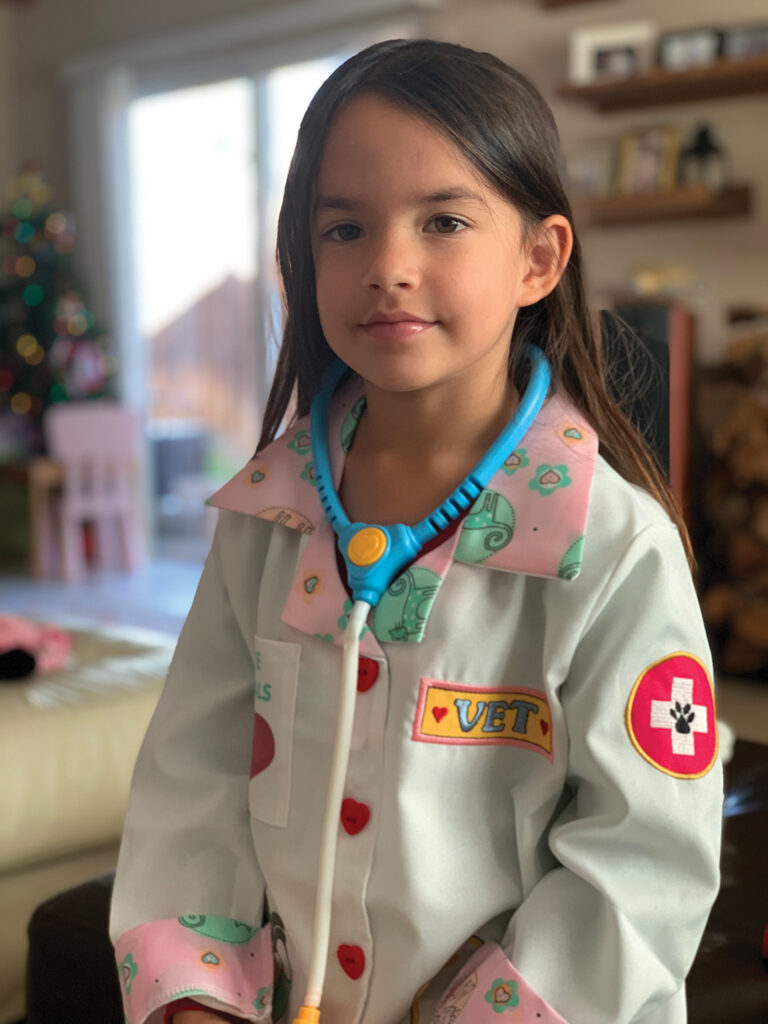
“At the end of the day, I want the world to know that the kids are the soldiers left behind,” says Mahoney. “But, with the right financial support, we can fix that, and in short order. So, I am on a mission to find the right people who can fund what is needed.” While he says that he’s learned that with donations to most other organizations, money is not going where the donor thinks it is, with Cancer Revengers, he says, “We are the fix, the future, and we put it directly where it needs to be, and with crystal clarity and transparency.” cancerrevengers.com, pnocfoundation.org
A Gift of Healthy Companionship
The mission of Rancho Santa Fe’s Helen Woodward Animal Center to help both animals and people is activated through a multitude of meaningful programs, but none may so perfectly fit that goal as one of its newer initiatives, Pets Without Walls. For the past six years, this program has, in collaboration with Father Joe’s Villages, provided free essential health care for the companion animals of San Diegans experiencing homelessness.
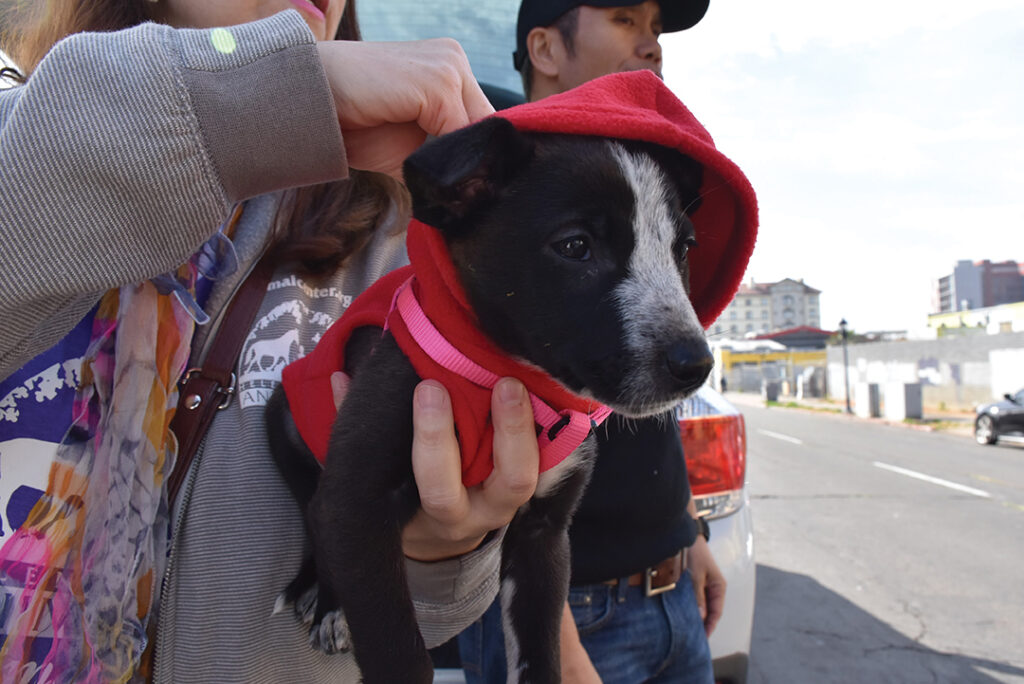
“I think that one of the misconceptions that a lot of people have is that these people shouldn’t have pets because they don’t have a place to keep them,” says Jessica Gercke, HWAC’s public relations and communications director. However, as Gercke explains, these pets and their owners can often be even more bonded than those in traditional housed environments. While pets in homes can often be left on their own while their people are away at work or school, or even left in a yard to play, “these pets are with their people 24/7.” Additionally, says Gercke, “A lot of times these pets have been with their people since before they were homeless. So, these are pets that have been through the mountains with their people, and they really are family members to these individuals.” For this reason, she says, removing the pets from their owners’ care and then putting them into the shelter system is not a solution and would be detrimental to both.
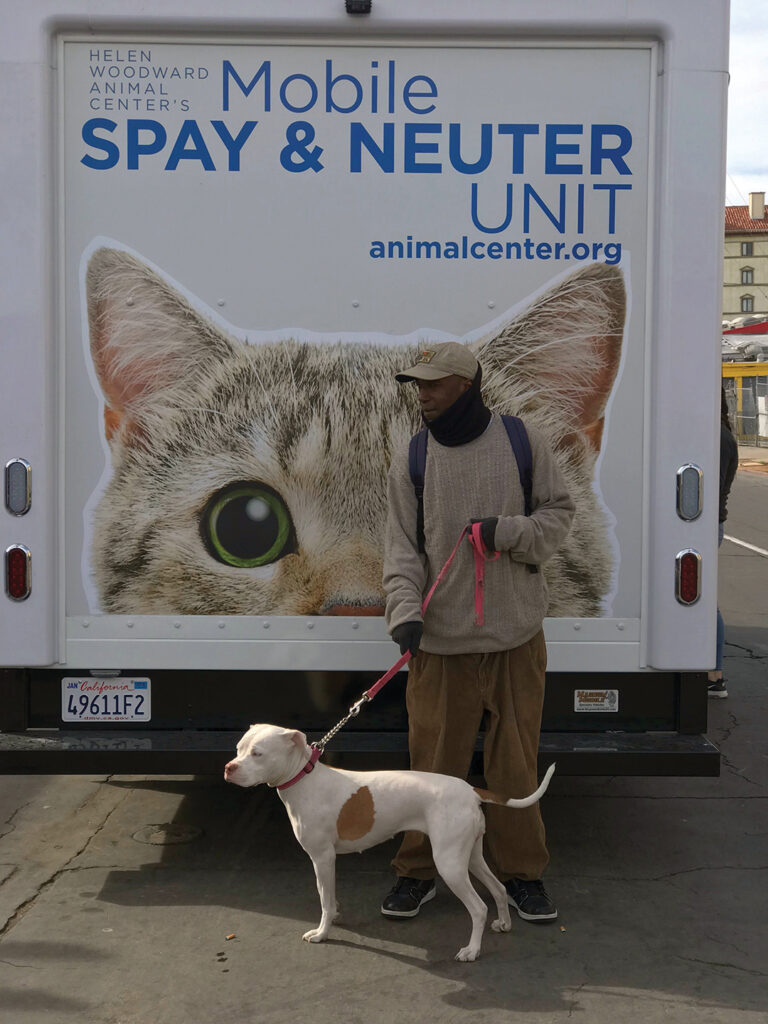
Instead, the center activates its fully mobile clinic on a once-weekly basis to different sites around the county to serve these members of the community. Offering basic wellness exams and procedures including spay and neuter services performed by veterinarians working on a per diem basis, Gercke estimates the program reaches about 400 pets annually. Many of the veterinarians have reported that although these pet owners don’t have reliable housing, they still arrive at the mobile clinic sites with all their pet’s medical paperwork and rarely miss an appointment. “I think for a lot of these people, it’s really a beautiful gift that they get to keep their animals and know that their animals are healthy and taken care of,” says Gercke. “It’s just really, really touching to see.”
Gercke admits that generating support for this program is more complicated than some of the center’s other initiatives, and the cost of covering the veterinarians’ services and supplies, and maintaining the mobile clinic, is high. “It’s very easy to get people to donate to orphan pets. This is a program where half is going to the pets, half is going to these individuals,” she explains. “I do think that these animals are the key to helping these people get back on their feet, because they see them through different eyes.”
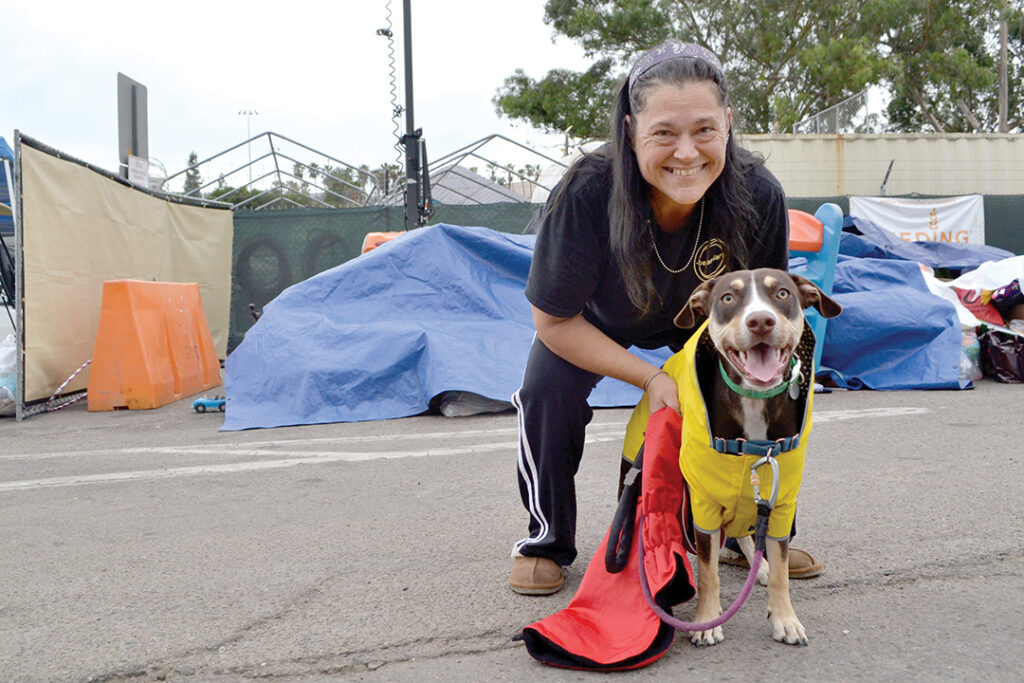
Donations can be made to specifically support Pets Without Walls, which Gercke says the center would love to expand in order to help even more people and pets experiencing homelessness. “I think this program really does speak to [our] mission so much,” she says. “We want to help those animals because we know those animals help those people.” animalcenter.org
A Rescue from the Heart
Though Celia Sciacca had been rescuing and rehoming horses for years and helping others to do it as well, when she created her own nonprofit in 2010, it was with the goal to rehabilitate rescued horses to provide equine therapy for the military. Though connecting with the military proved more challenging than she’d anticipated, there were always more horses that needed her. Now, Sciacca estimates that her organization, Laughing Pony Rescue, saves between 100 and 200 horses a year (she puts her lifetime total at about 3,000 rescues!), both at her Rancho Santa Fe-area ranch located near The Bridges community and through her collaborations with partner organizations as well as private donors and volunteers. Some are rehabilitated and kept on-property as therapy animals, and others are adopted. It’s hard and often heartbreaking work, but Sciacca says it’s what she is meant to do.
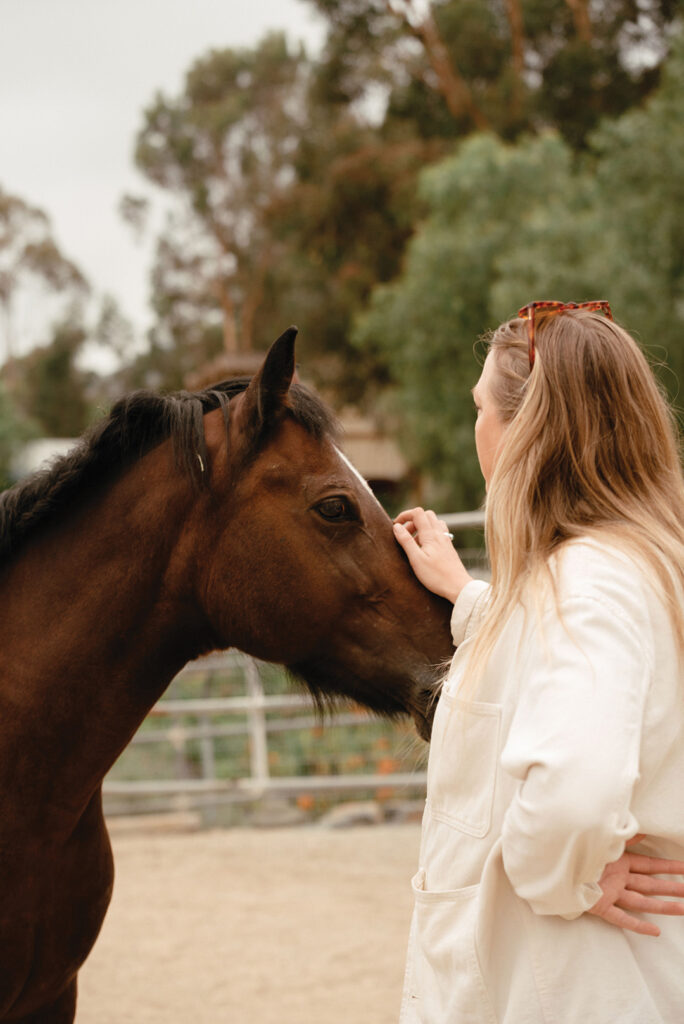
“There’s a lot of bad stuff going on in the world, and my heart breaks, but this is what I know to fix; this is what I know to help,” she says. “If I had a lot of money, I’d be throwing it here and there and everywhere to help people and animals, but this is what I know.” And she knows it well. She’s built a vast network and works with volunteers to identify rescue opportunities, often from feedlots that send animals to slaughterhouses and other adverse situations. The endings aren’t always the happy ones she wishes they were, but even the few that can’t be saved are treated with kindness and dignity and not left to suffer.
“Celia is an angel on Earth,” says Laura Spielman, who works with Sciacca at Laughing Pony Rescue. “What she does is like nobody else. She gives every moment that she has and every dime that she has to rescuing.”
Even Spielman herself was rescued, in a way, by Laughing Pony. “I was going through some stuff in my own life a while back,” she remembers, when someone recommended that she attend a retreat that was equine-based. “I was like, ‘Equine? I liked horses as a kid, I’ll go.’ And it was magical. It was totally and completely transformational for me, and I left there thinking, ‘How can I do this? How can I bring this kind of magic to other people?’” She discovered Sciacca and Laughing Pony and began volunteering before eventually becoming a PATH International Certified Equine Specialist for Mental Health and Learning. She and another of Laughing Pony’s volunteers who’s a therapist are certified to treat veterans with post-traumatic stress, and Spielman is also working to become certified in sports massage, equine massage, and biomechanics.
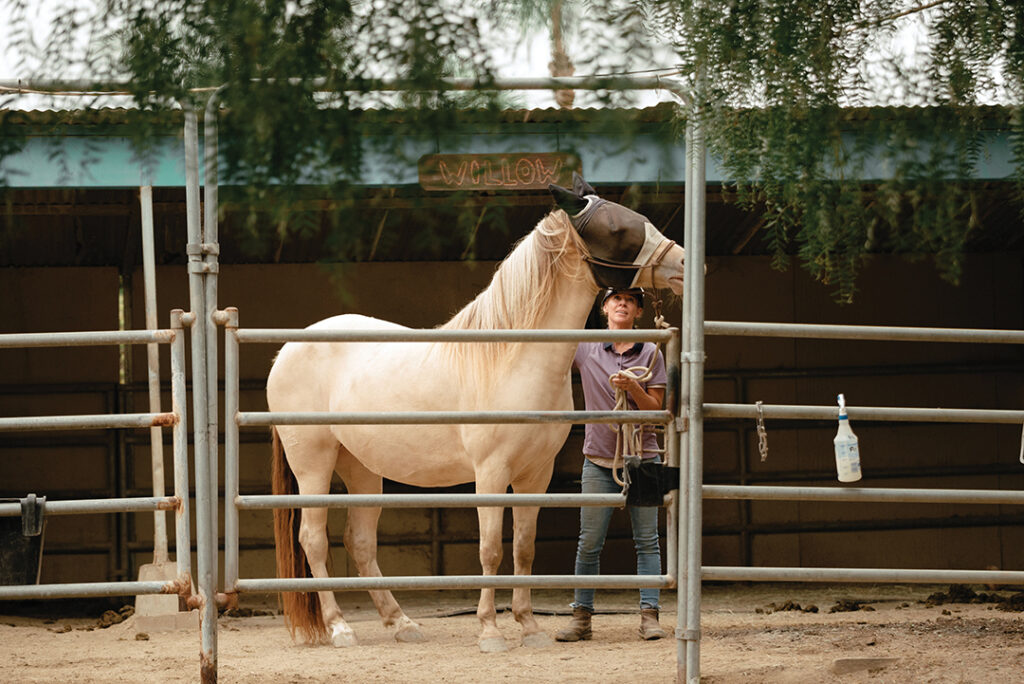
In addition to their rescue and rehabilitation efforts with horses (and also donkeys, goats, and even roosters) and providing therapeutic services to humans, Laughing Pony Rescue also offers camps and educational programs to help foster greater awareness, love, and compassion for these animals. The programs also help to support the ranch financially, enabling Sciacca to continue to pursue her passion: saving more animals from cruel fates. “The more money we bring in, the more animals we can save,” she says matter-of-factly. “I don’t need my nails done, I don’t need to have a big expensive car or anything like that. I just need to save animals.”
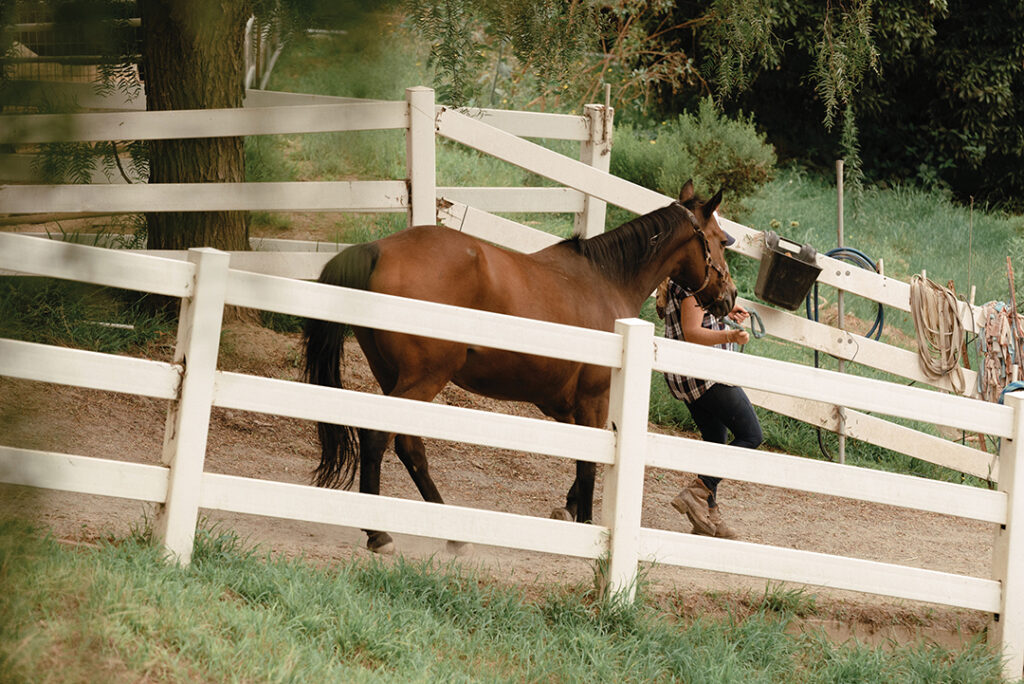
On the surface, it might seem like their work would be overwhelmingly sad. And though there are always more animals than they can possibly help, Spielman still sees the good in what they are able to accomplish. “It’s so rewarding to see them thrive and to hear their stories of where they came from,” she says of the horses. “It sounds like it’s sad, but it’s actually incredibly healing and heartwarming. What’s amazing about them is their ability to heal, mentally, and their ability to trust. And then, their ability to heal humans.” laughingponyrescue.org
An Education for All
Addressing the critical issues surrounding the housing insecure — shelter, clothing, food — is paramount, of course, but what can often be overlooked is another essential part of the puzzle: education. Navigating a complex situation that far exceeds any that a child can reasonably be expected to handle, these kids often withdraw and try to become invisible out of shame, fear, or loneliness, and many miss school or stop going altogether.
Shockingly, 50 percent of the country’s unhoused population is found in California, and that includes 64,000 kids. Ensuring those kids continue to receive an education is a daunting task, and not one addressed on a broad scale — or almost at all. San Diego, however, is a bright spot among these dark statistics. In Barrio Logan, the one-of-its-kind, comprehensive K-12 Monarch School is a powerful example of what can be done to give kids the education, support, and foundation they deserve.
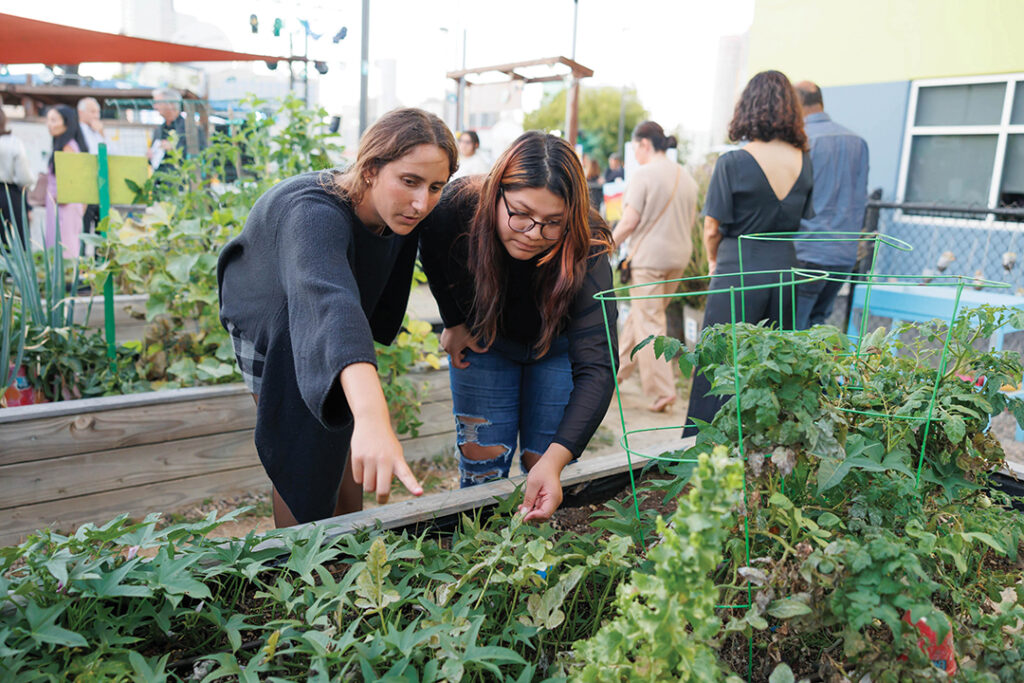
“This is a place where they can set that baggage down and they can feel like part of a community because every student here is experiencing the same condition they’re experiencing,” says Afira DeVries, president and CEO of Monarch School. “That releases them from the stigma, and it releases them from the feeling that they need to hide and that they need to be less than participatory in their school environment, which is what happens in a traditional school.” Instead, kids attending Monarch School get to be regular kids engaged in academics and sports, and a separate, dedicated campus called The Chrysalis, located just blocks away, features spaces for music, dance, and performance and visual arts. In addition to providing the traditional elements of a school, Monarch also supports kids’ social and emotional growth, as well as life skills to build a foundation for success and break the cycle of homelessness.
“The very last thing they’d want is to be imagined as poor, downtrodden, joyless little human beings because what they are, are just kids,” says DeVries. “They have moments of joy and happiness, and they have moments of sadness and overwhelm. They have friends and they have adversaries, they pick on each other and they love each other. They’re kids, like any other kid.”

DeVries says it’s a common misconception that the school is state-funded, but the reality is that it is a nonprofit organization. However, it is fortunate to have significant relationships within the community — including businesses, foundations, and corporations including Accenture, UBS, SDG&E, and the San Diego Padres — which provide essential funding for its programs and services that far exceed the role of a “regular” school. When asked why Monarch speaks to people on such a deep level, DeVries says, “I really think it comes down to one specific thing, and it’s that everyone was a kid once. It’s that feeling of universal relatability, but also realizing how unfair it is that our kids struggle the way that they do, because it’s through no fault of their own. And if you have resources, and you are connecting with that feeling that our kids feel, you’re going to want to do something about it.”
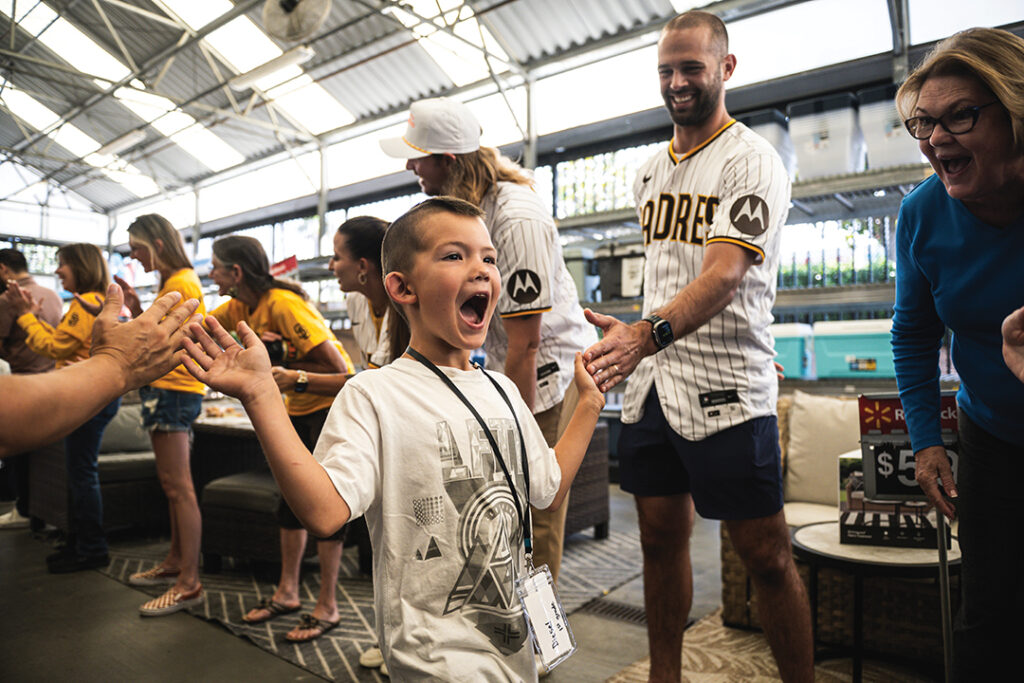
It’s an inspiring and daunting undertaking, and Monarch School’s entire staff, down to its janitors, are trauma informed for a reason, as these kids bear a heavy emotional burden. “But you know what? They’re full of joy and hope,” says DeVries. “And for me, personally, I think that’s inspiring. Because if a kid who is unhoused can still find joy, everybody can figure out how to find joy.” monarchschools.org
For additional year-end gift giving inspiration, click here to read our 2023 Charitable Giving Guide.


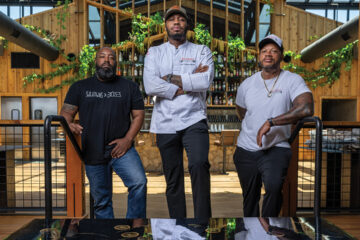
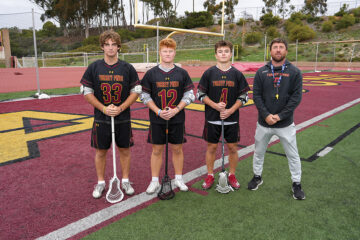
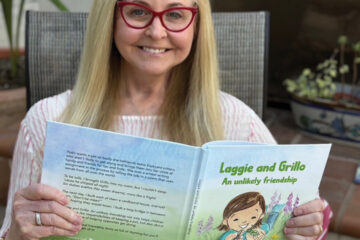
Comments